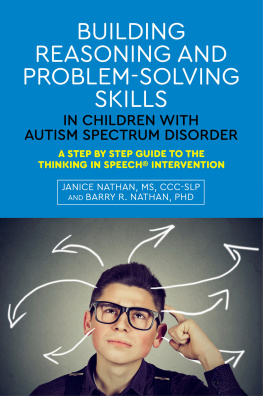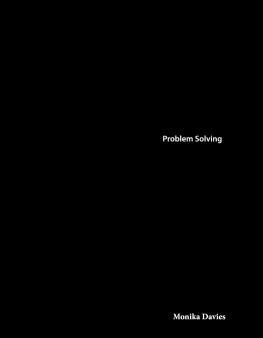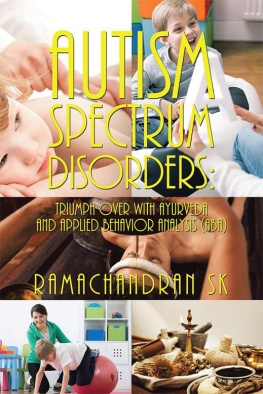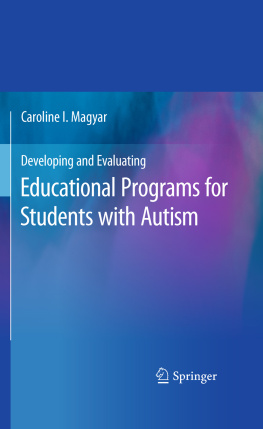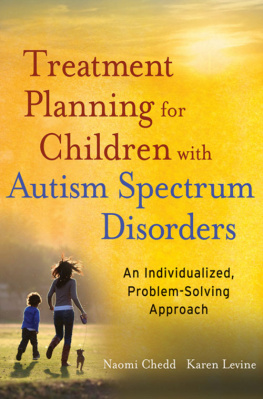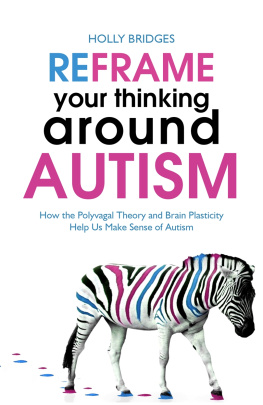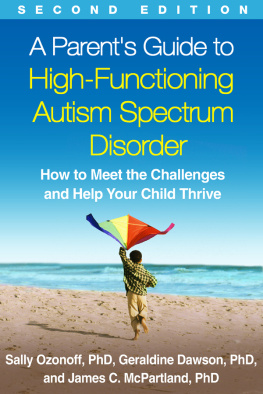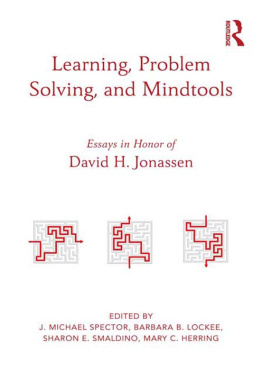
BUILDING
REASONING AND
PROBLEM-SOLVING
SKILLS
IN CHILDREN WITH
AUTISM SPECTRUM DISORDER
A STEP BY STEP GUIDE TO THE
THINKING IN SPEECH INTERVENTION
JANICE NATHAN, MS, CCC-SLP
AND BARRY R. NATHAN, PHD

Jessica Kingsley Publishers
London and Philadelphia
Contents
Preface
Growing Up in a Family with Autism
Nine years agoat the age of 50my brother received a diagnosis of high-functioning autism (HFA). Up until his diagnosis, he had grown up with the label learning disability. When Sam was diagnosed with HFA, I went through what I call a mini-mourning period. I had mixed feelings of shock, disbelief and sadness. My brother was no longer someone with a learning disability, but someone with autism! I now realize that my mother was also on the autism spectrum (but that is another story for another time).
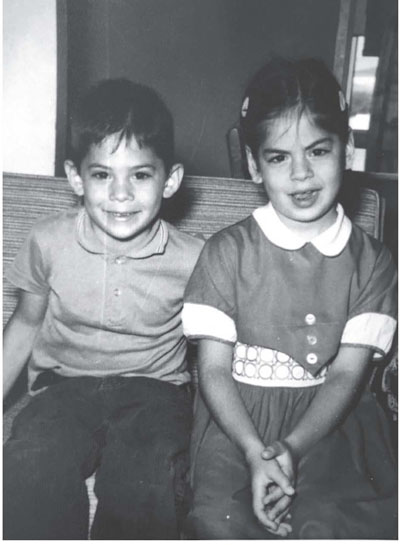
As a result, I have spent the last two years revisiting my entire childhood, because the childhood I thought I had, had disappeared and was replaced by a mom and a brother who were on the spectrum. I now recognize that there are three cousins on my moms side who are also very quirky and different, and if not actually on the spectrum, have some of the characteristics of someone on the spectrum. Resolving this disconnect has helped me so much in my relationship with my brother. I have always admired my brother for his quiet dignity and perseverance through the enormous challenges he has faced in his lifetime. He is intellectually my superior, and one of the most generous and thoughtful people I know. His diagnosis of HFA has allowed me to become much more accepting of his unique perspective on life. And yet, I can still become uncomfortable sometimes when he says or does something that might be construed by others as sarcastic or lacking in empathy.
Growing up, my brother had severe speech, language and communication delays. He was nonverbal for the first few years of his life, and would wander off in stores. Whenever we went shopping, my mother would put a child leash on my brother as he was very inconsistent in attending to his name. In fact we called him Sammy boy, because my mom told me that this tended to help my brother hear his name. When Sam did begin speaking, my parents and I were the only ones who understood him. I was his translator until he was nine. Even after that, unfamiliar adults had trouble understanding Sam much of the time. Its hard for me to know what Sam sounded like when he talked, because I understood everything he said, even when others couldnt. When I look back, I realize that we didnt engage in true back-and-forth conversation. We played games together that I initiated, or I would tell him stories and he passively sat and listened.
Academic learning was an absolute nightmare for my brother. His frustration and anger grew as he watched everyone else around him learn to read and socially interact so easily and effortlessly. After he was given his label of learning disability, he was placed in the one-size-fits-all special education room that existed back then. There he stayed until high school when he transferred to a vocational-technical high school and trained to become a machinist.
In retrospect, I believe not having the label of autism as a child may actually have benefited Sam, in that my dad had the same expectations for him as he did for me. We were both expected to clean our rooms, get up for school and do homework. The routine of homework for me was that I would go in my bedroom and close the door. Sams homework routine was very different. Every evening my dad would say, Sam, its time to read. Sam would begin to yell, No, I dont want to. My dad would then have to drag my screaming and kicking brother to their reading spot, and Sam would have to read a Dr. Seuss-type book over and over again. I agree with the writer and researcher Temple Grandin that expectations should be placed on all children. We need to assume that all children can learn, and then see what they can do by themselves and what they need help with. My brother is a living example of this philosophy. Sam was a non-reader until middle school. My dad saw his son as a child who was capable of learning, but needed support to achieve academic success. My brother is now an avid reader who loves to read science fiction books.
I am fortunate in that as Sam got older, his ability to communicate with language improved. Now as an adult, he is employed full time, drives and has a social network through the Advisory Board on Autism and Related Disorders (ABOARD). It is interesting how our life experiences impact our career choices. I now know that growing up watching my brother struggle to succeed academically and socially shaped my decision to become a speechlanguage pathologist. I never thought about it at the time: when I looked over the curriculum for communication sciences and disorders, I felt like I had come home! In graduate school, I had no idea that I would end up specializing in providing language intervention for children with autism spectrum disorders (ASD). It just sort of happened late in my career, after I moved to Pittsburgh from Arizona in 2001. I took a job at The Childrens Institute, and for the first time was seeing a significant number of children on the spectrum. Thats when everything clicked and I realized that this is what I was meant to be doing!
As an adult and a speechlanguage pathologist, I am very empathetic with the families who have children or siblings on the spectrum. I am passionate and dedicated to helping children like my brother have easier days than he did, and empower them to believe in themselves. I dont believe that I would understand children with ASD the way that I do if I had not grown up with my brother and my mom.

Ive always believed that things happen for a reason. My brother (and my mom) have given me the unbelievable gifts of compassion, tolerance, and having the luxury of being able to step out of the box that all of us neurotypicals live in, and to appreciate and enjoy the different world that out of the box thinkers like my brother live in every day of their lives.
Note: To aid readability and to avoid favoring either gender, I have alternated between male and female gender pronouns in each chapter.
Adapted from Growing up in a family with autism (Nathan, 2011).
Part I
BEING ON THE
AUTISM SPECTRUM
When young children get angry, they sometimes hit or bite or kick. That doesnt mean theyre bad. Thats just how they show theyre mad. They dont yet have words to tell us how they feel.
Fred Rogers of childrens television program, Mister Rogers Neighborhood
CHAPTER 1
Understanding Autism
Spectrum Disorders
What its Like to Live on the Autism Spectrum
Imagine if in every situation in your day-to-day life, good or bad, happy or sad, you had difficulty expressing your thoughts or feelings. Imagine what your life would be like in a classroom if your brain had difficulty retrieving the words it needed to thinkto reflect on what was said, to compare or contrast it to what you already knew, to reach a conclusion or opinion, even before you were ready to express yourself verbally. Imagine your feelings as these situations built up, over and over again, in a classroom situation or in a new situation. Wouldnt you get frustrated? Wouldnt you, out of frustration, want to hit something (or someoneeven someone you love and respect)? Might you want to throw something, or bang your head against the wall? This is what they experienceevery day. Expressing our thoughts and feelings requires language.
Next page
